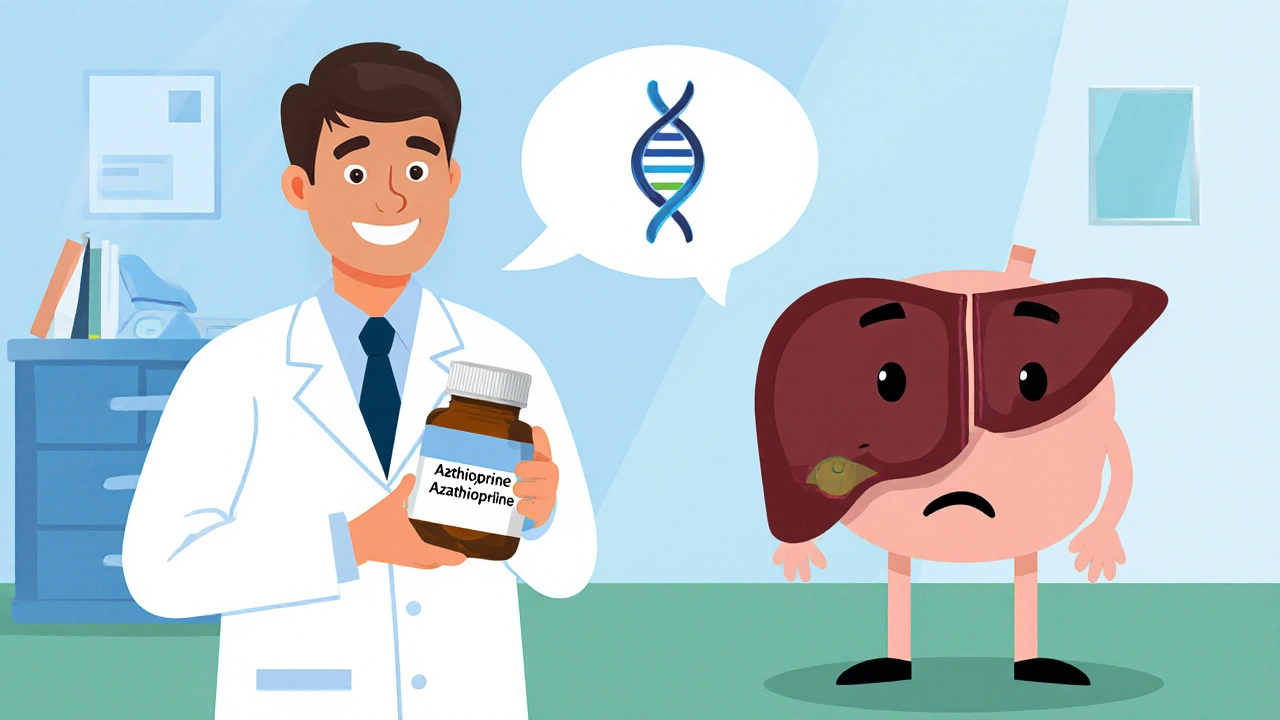Azathioprine-Induced Hepatitis: Causes, Symptoms, and Management
Learn what causes azathioprine‑induced hepatitis, how to spot early signs, and the steps to treat and prevent liver damage while staying on therapy.
Read MoreWhen working with drug-induced liver injury, a condition where medications damage liver cells and impair function. Also known as DILI, it can range from mild enzyme elevations to acute liver failure. Understanding DILI is crucial because many everyday prescriptions carry hidden hepatotoxic potential, and early detection can spare patients from serious outcomes.
A major culprit is leflunomide, an immunomodulator used for rheumatoid arthritis that can raise liver enzymes, especially when combined with alcohol or other liver‑stressing agents. Clinical reports show that patients on leflunomide often need regular liver function monitoring, and dose adjustments may be required to keep toxicity in check.
Another lifestyle factor that intensifies DILI risk is alcohol, a known liver irritant that can synergize with many drugs, lowering the threshold for injury. Even moderate drinking can push a borderline safe dose into a dangerous range, so healthcare providers usually advise abstinence or strict limits while on high‑risk medications.
Among prescription drugs, methotrexate, a disease‑modifying antirheumatic drug that interferes with folate metabolism, is notorious for causing cumulative liver damage if not monitored. Guidelines recommend baseline liver panels and periodic checks, especially for patients with existing liver disease or alcohol use.
Monitoring liver function tests (LFTs) forms the backbone of DILI detection. Elevated alanine aminotransferase (ALT) or aspartate aminotransferase (AST) often signal early injury, while bilirubin spikes indicate more severe compromise. Routine LFTs allow clinicians to spot trends before a full‑blown hepatitis develops, enabling timely drug discontinuation or dose reduction.
Risk factors extend beyond the drugs themselves. Genetic polymorphisms in enzymes like CYP450 can alter drug metabolism, making some individuals more prone to toxicity. Age, obesity, diabetes, and pre‑existing viral hepatitis also raise the stakes, turning a typically safe medication into a liver hazard.
Management strategies hinge on early recognition and swift action. The first step is stopping the offending agent; if the drug is essential, clinicians may switch to a safer alternative or lower the dose. Supportive care, such as hydration and avoidance of other hepatotoxins, helps the liver recover. In severe cases, referral to a hepatology specialist and consideration of liver transplantation may be necessary.
Below you’ll find a curated collection of articles that dive deeper into specific drugs, monitoring protocols, and practical tips for preventing and handling drug‑induced liver injury. Whether you’re a patient wanting to understand your meds or a professional seeking quick references, the following posts cover the range of issues you’ll encounter.

Learn what causes azathioprine‑induced hepatitis, how to spot early signs, and the steps to treat and prevent liver damage while staying on therapy.
Read More